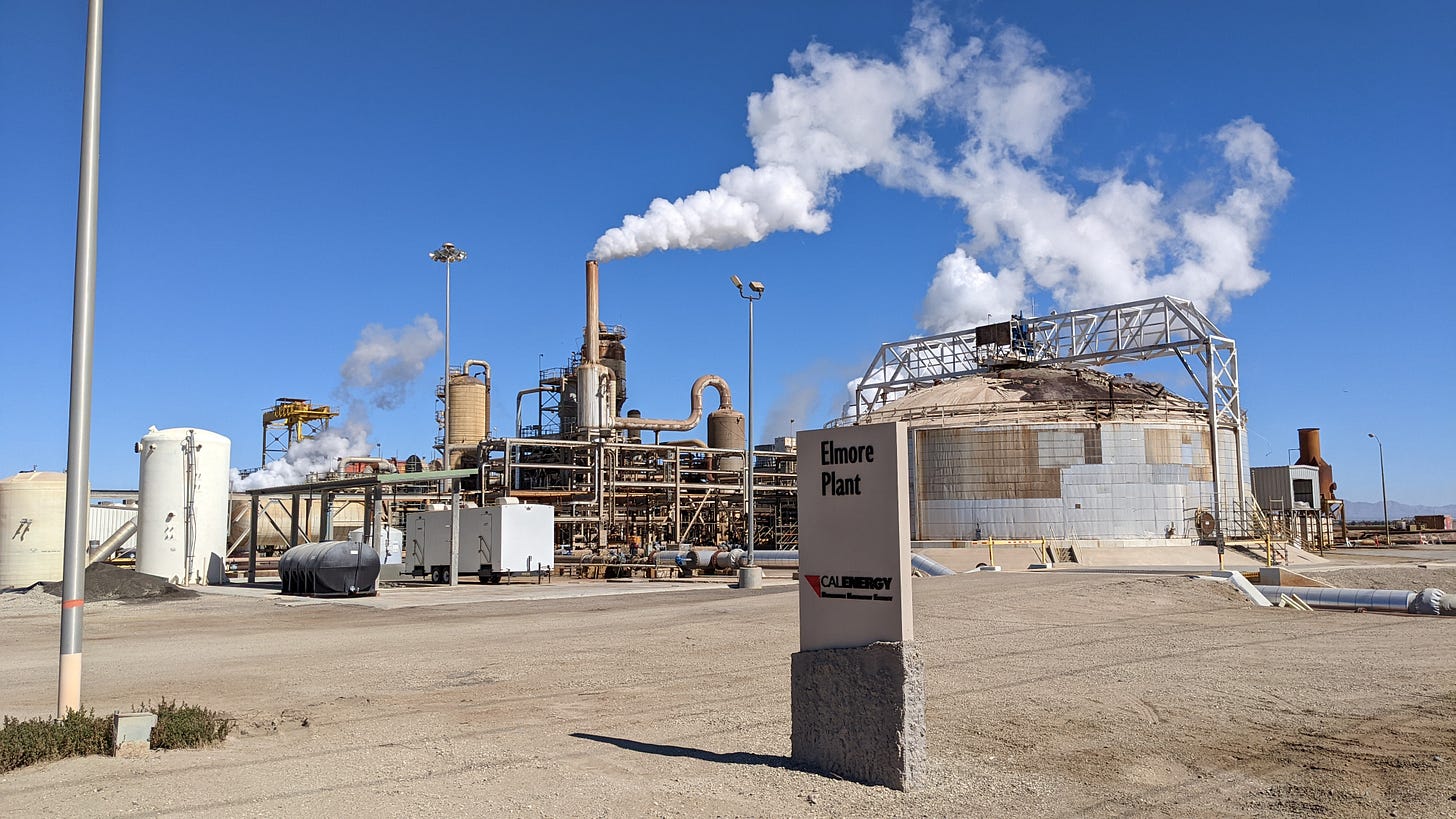Issue 1: Biden and Newsom signal a new era for Imperial County
Also, Imperial County leaders ask for billions of dollars to bring the Lithium Valley to fruition.
You are reading Lithium Valle, a weekly newsletter that follows developments of the so-called Lithium Valley in Southern California. Please send me tips, suggestions or corrections to me directly at lithium.valle@gmail.com and share this newsletter.

Fresh this Week
Imperial Valley in Biden’s Radar
President Joe Biden and California Gov. Gavin Newsom held a virtual roundtable Tuesday to highlight their interest in lithium in the Salton Sea in Imperial County. | Watch the full discussion or read the transcript | Coverage from the Los Angeles Times and The Desert Sun
For Biden, lithium in the Southern California region represents an opportunity to depend less on mineral imports from China.
For Newsom, developing the Imperial County into "the Saudi Arabia of lithium" is a huge economic opportunity for the state and the region, which is already attracting millions of dollars in private investments and grants that will translate into high-paying jobs for the local economy.
Others on the call: Berkshire Hathaway Energy Renewables said it aims to have commercial-scale production of lithium extraction by 2026. Alianza Coachella Valley executive director Silvia Paz also joined the virtual roundtable to air “cautious optimism” in economic promises made by Newsom and local governments.
‘Game-Changer’
Tuesday’s virtual roundtable follows the announcement of an economic development plan created by the Imperial County Board of Supervisors last week. In the plan, the county requests funds from the state and the federal government to help create the infrastructure around lithium extraction in the Salton Sea. | Coverage from the Calexico Chronicle
What it asks from the state:
$5 million to fund an environmental impact report
$500,000 annually (increasing 5% each year) from the state to create a Lithium Valley Development Office in Imperial County
$100 million to support and fund a Cal Poly campus in Brawley to train engineers, geologists and chemists needed to do the work
$5 million for new Employment Tax Credits
What it asks from the federal government:
$50 million to build infrastructure around the geothermal lithium extraction plants in Imperial County
$1 billion to upgrade railways
$500 million to fund grid upgrades
$500 million to provide loans/funding to private operators to build/operate End of Life Recycling and Reuse facilities
IID Sells Land to Controlled Thermal Resources
The Imperial Irrigation District (IID) — the public board that oversees water and power in Imperial County — is selling 3,144 acres of lithium-rich land to Controlled Thermal Resources for $500 to build out its Hell’s Kitchen Geothermal plant. The sale is set to be finalized at its March 1 meeting.
Want to stay updated on developments of the Lithium Valley? Join the Facebook Group and subscribe to this newsletter for a fresh batch of news every Friday.
Between the Lines
Where Does Riverside County Fit in All of This?
Lithium extraction around the Salton Sea is an economic and environmental interest to both Imperial and Riverside counties. The Salton Sea is well positioned on the two counties.
But where does Riverside County fit in the larger Lithium Valley picture? That’s unclear. For starters, the state’s blue-ribbon committee to examine lithium extraction, the Lithium Valley Commission, has no representatives from Riverside County.
When asked whether Imperial County would consider its neighboring county in its economic plan, Imperial County supervisors said “this resource is ours,” referring to the lithium mineral deposits.
In an email, Riverside County Supervisor Manuel Perez, who is also the president of the Salton Sea Authority, said his county has not had “such a robust conversation” with Imperial County regarding its new lithium economic plan.
“I’m curious to hear from the Lithium commission and reading the Imperial County lithium plan, as well, to have a conversation with the Assemblyman and my colleagues from Imperial County. There may be potential direct and indirect benefits for Riverside County as it pertains to the mitigation of the Sea, the suppression of dust and preserving wildlife and recreational and economic developments in the future,” Perez said.
Exactly How Much Lithium Is Under the Salton Sea?
Imperial County’s lithium economic plan hinges on the vast trove of lithium underground, which it estimates to be around 15 million metric tons. But is that an accurate estimate?
I asked this to Michael McKibben, one of the leading researchers in the subject of geothermal mineral deposits in the Salton Sea region. McKibben says the county’s 15 million estimate falls within the range he has found, which is somewhere between 5 to 32 million metric tons of lithium carbonate equivalent, or LCE — which is the unit of measurement the mineral industry uses to sell it on the market.
McKibben said it is difficult to get an accurate read of lithium content in the Salton Sea region “due to uncertainty about the porosity and volume of the geothermal reservoir.” Researchers from the Lawrence Berkeley National Laboratory (Berkeley Lab), UC Riverside, and Geologica Geothermal Group, Inc. will be refining this range over the next year, he added.
Movements to Watch
California Assemblyman Eduardo Garcia (D-Coachella), whose 56th district encompasses large portions of both Riverside and Imperial counties, has been a key player for the state’s lithium ambitions. Most recently, he has introduced at least four bills in the state legislature to secure an economic windfall of lithium extraction for the Imperial Valley. | Source: Los Angeles Times
The Imperial Irrigation District board on March 1 will sign off on its sale of 3,144 acres of land to Controlled Thermal Resources (CTR) for its Hell’s Kitchen Geothermal plant. CTR is one of three companies vying for lithium extraction in the region.
Want to stay updated on developments of the Lithium Valley? Join the Facebook Group and subscribe to this newsletter for a fresh batch of news every Friday.



